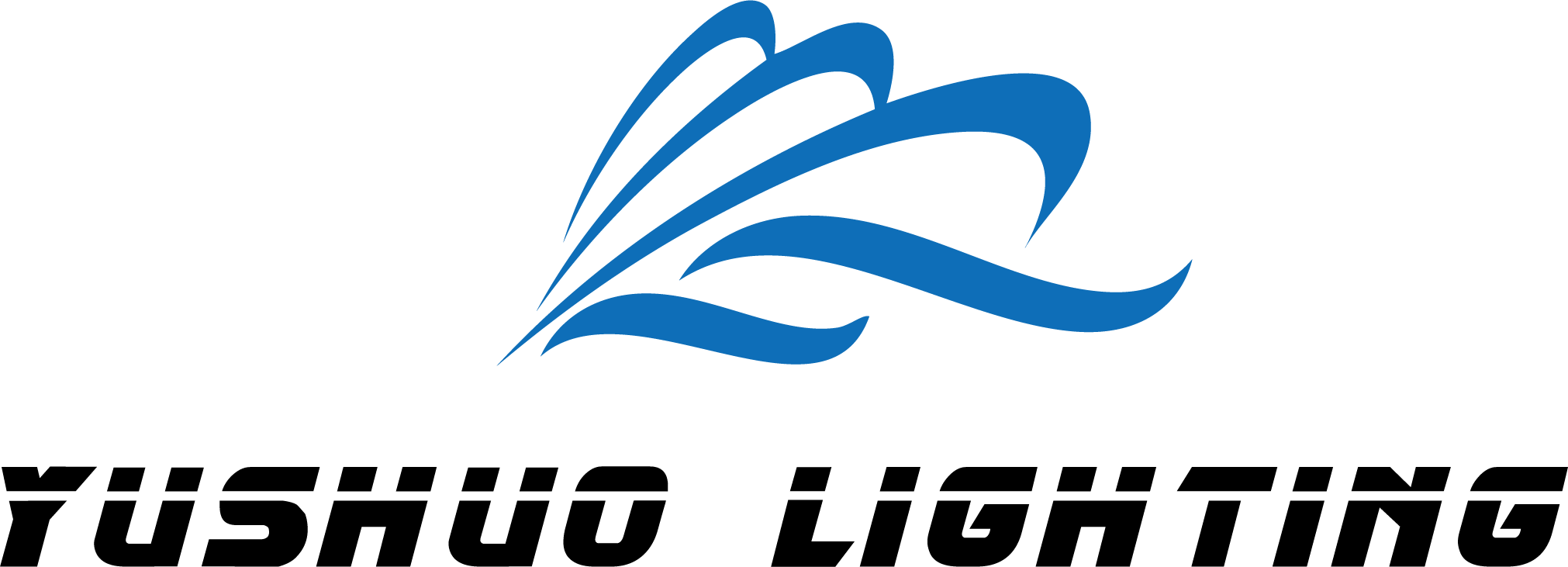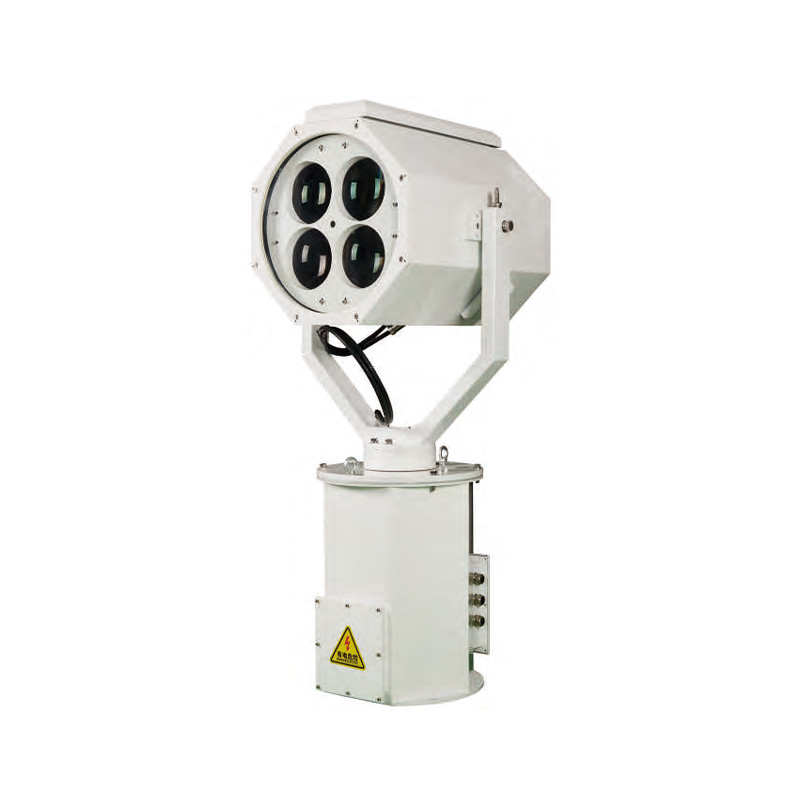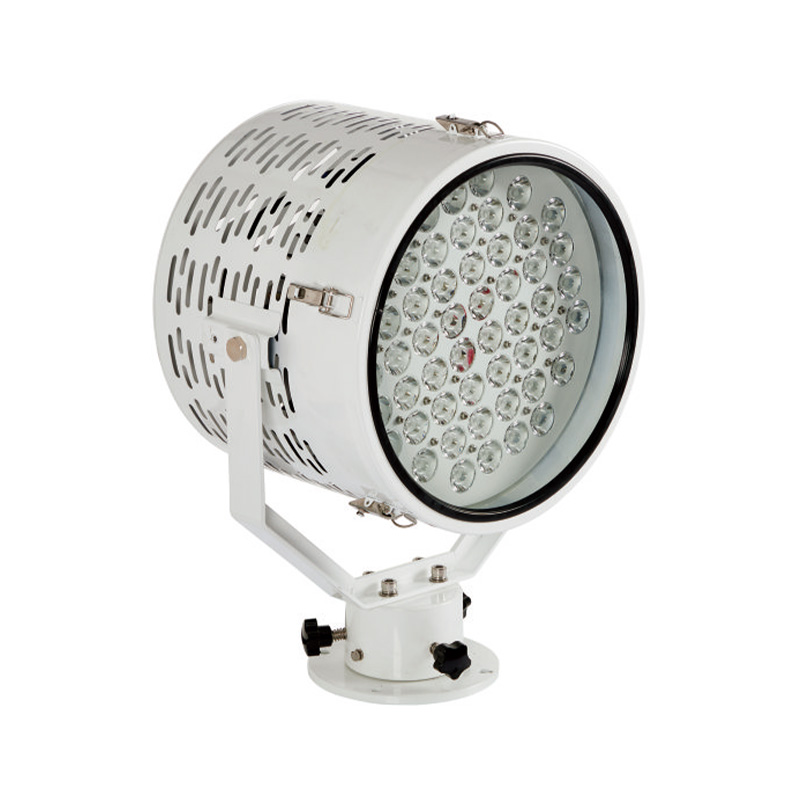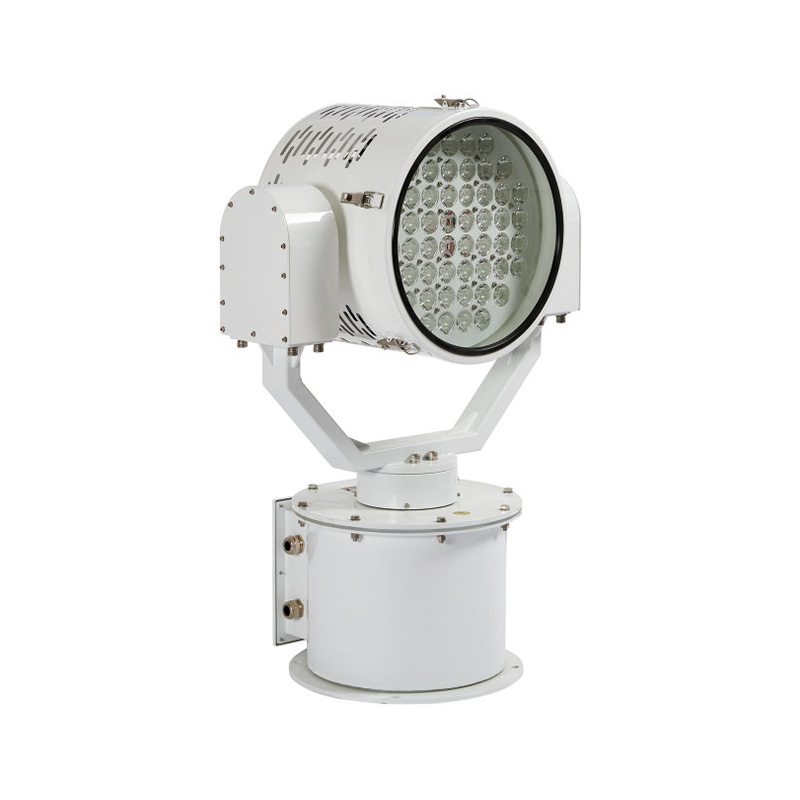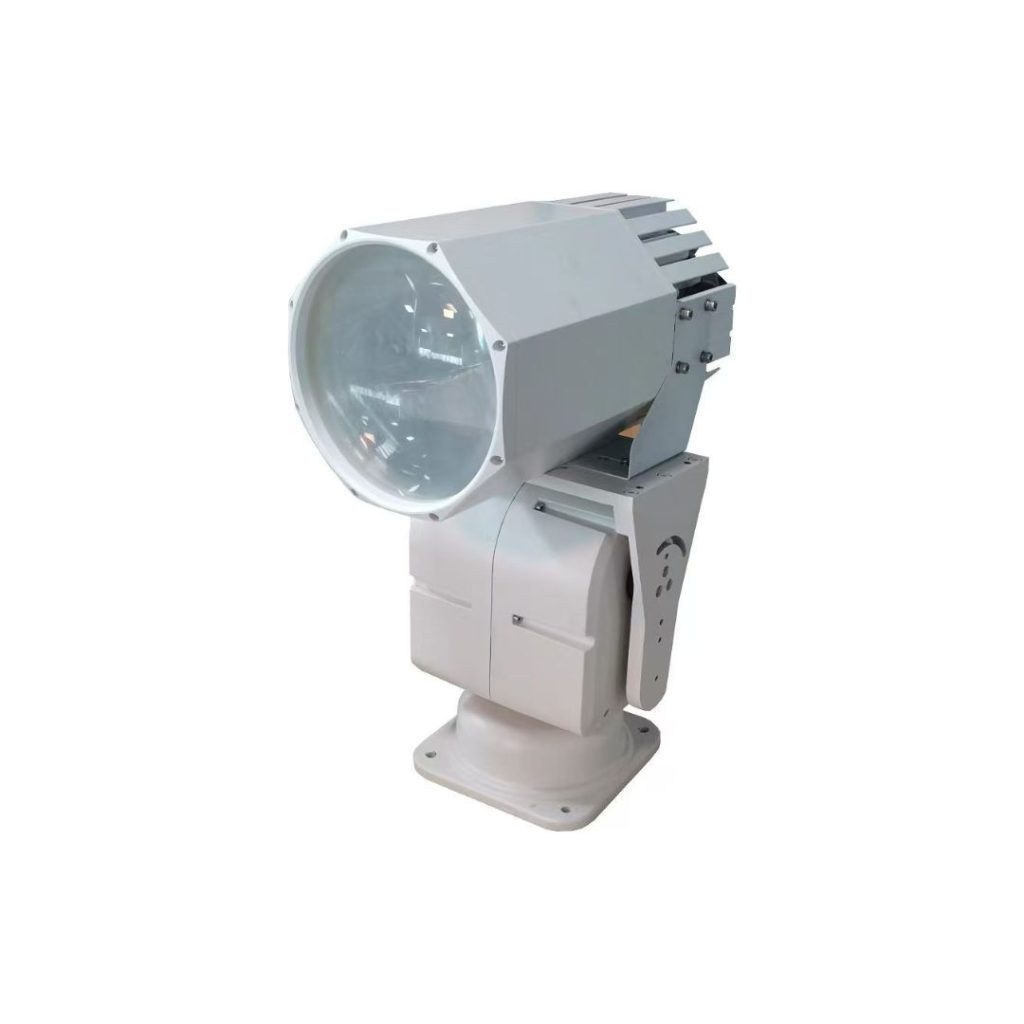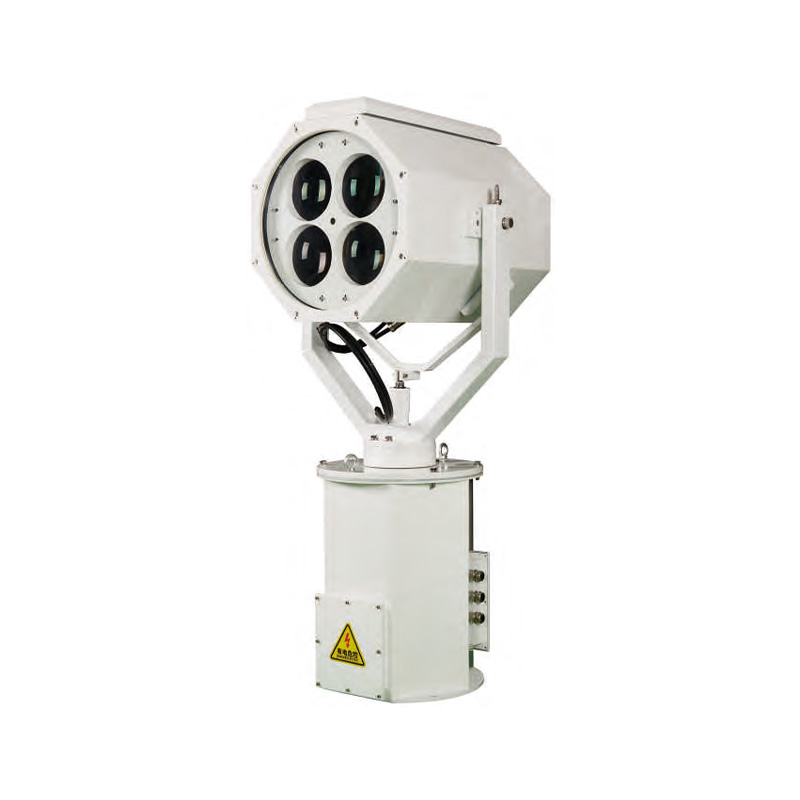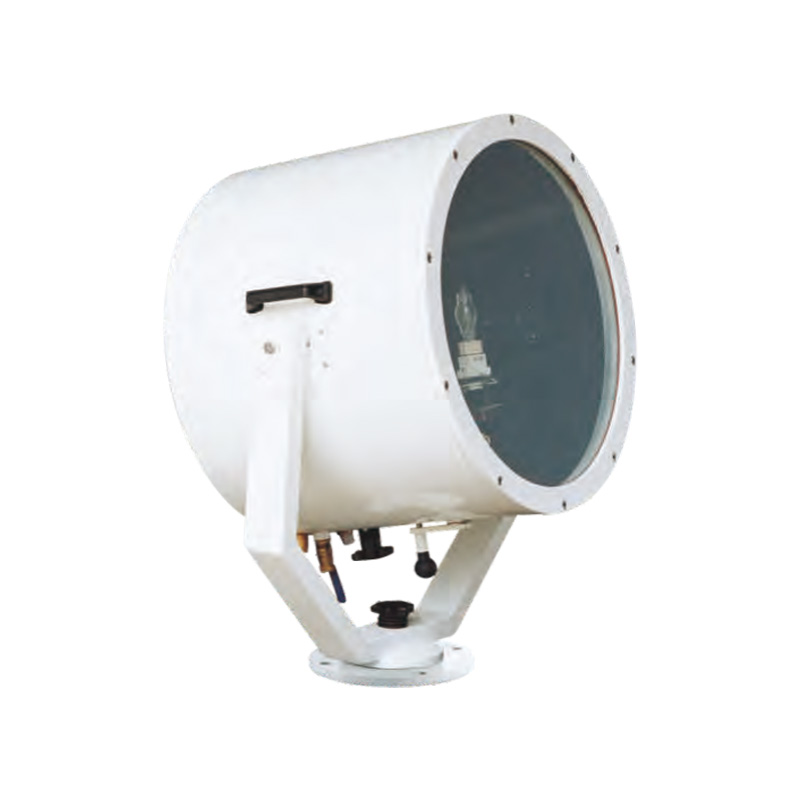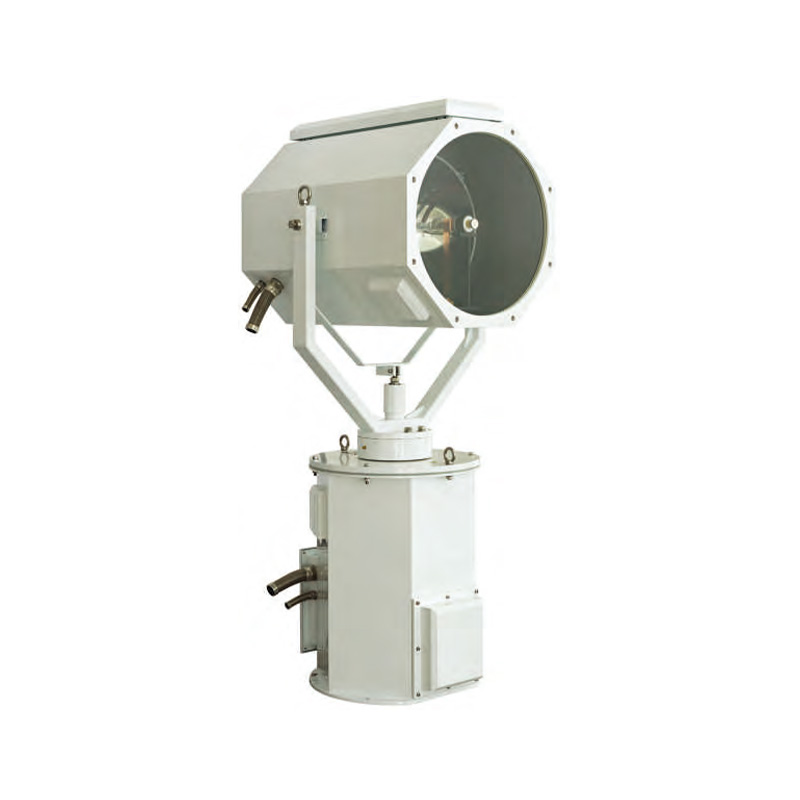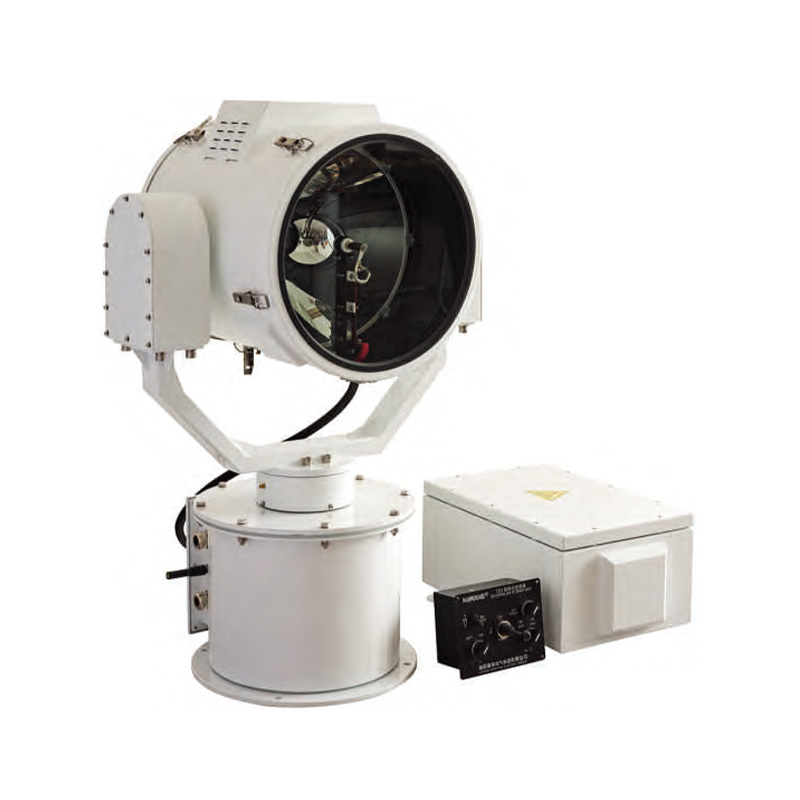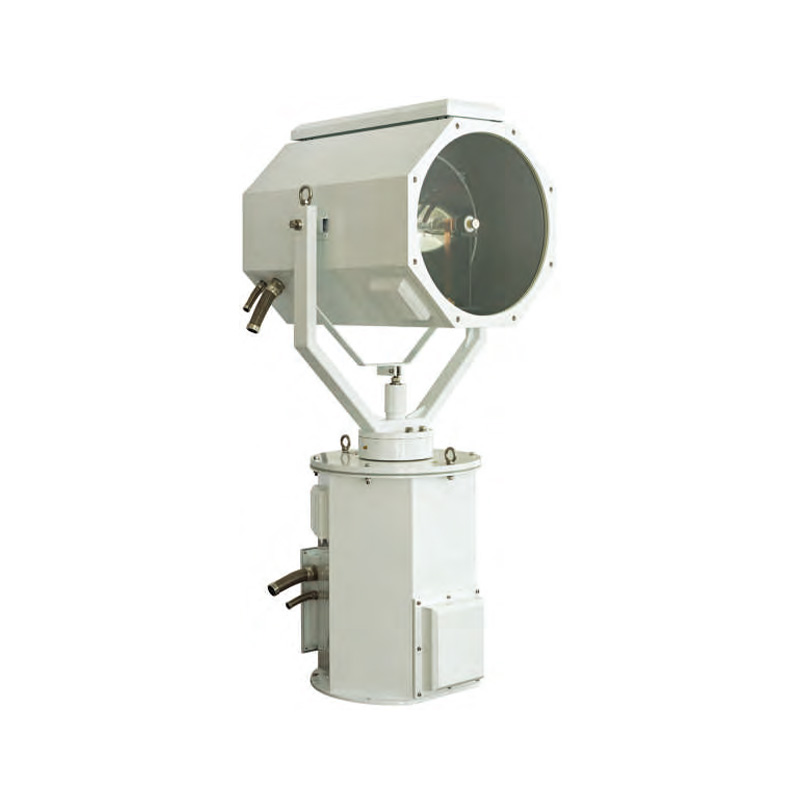Advantages and Disadvantages of New and Old Technology Marine Searchlights Comparison
Like other industries, the technology of the marine shipping industry is constantly developing. Thanks to the development of the industry, the technology of marine searchlights has also been continuously improved. As a marine lighting manufacturer with many years of production experience, we are well aware that technological innovation is crucial to improving product performance. In the field of marine searchlights, the contrast between new and old technologies is particularly obvious.
Table of Contents
Technical Characteristics of Old Halogen Searchlights
Old halogen searchlights make use of iodine tungsten filaments to produce light. These filaments generate a very stable and powerful beam within seconds. The primary benefit of this technology is the low price of the equipment, along with mature maintenance networks which means that shipowners can readily get spare bulbs. Since the light produced by halogen lamps uses warm yellow colours, they are easier for humans to instantly recognise compared to other options available in the market. On the downside, halogen gems have poor energy usage rates and when used on ships, vessels will have to spend more operating hours to maintain a set brightness. Alongside these issues, halogen bulbs emit over 200 degrees Celsius of heat while being used which creates problems on older components while simultaneously forcing modern air conditioning and ventilation systems on ships to work harder than necessary.
Almost all halogen lamps only provide 2000-4000 hours of service; as such frequent maintenance encounters high expenses and extended downtimes due to bulb replacements gets costly.
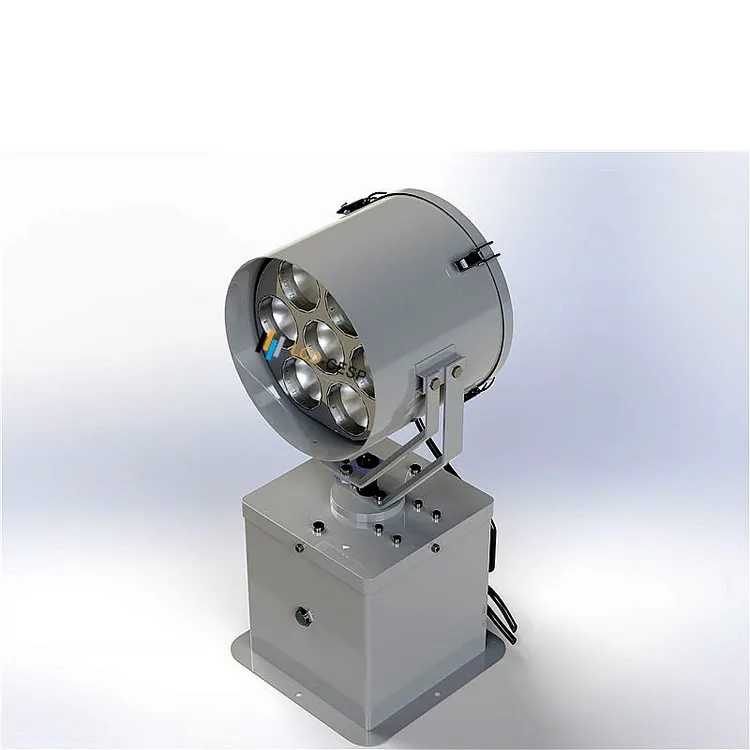
Technical Features of New LED Searchlights
LED searchlights utilise modern semiconductor chips as light sources, which are much more stable and efficient than older technologies based on halogen lights. The efficiency of LEDs in converting electrical power into light is significantly higher, often yielding two to three times the brightness of halogen lamps while using only half or even less electricity. Also, electric thermal stress experienced by equipment that relies on LEDs for lighting is lesser since the temperature is controlled below 60 degrees Celsius during operation. The best part is, LED light sources have a lifespan between 30,000 to 50,000 hours; this allows fleets to use the lights without worry for many years and reduces costs associated with maintenance and replacement in the long run. Amidst harsh marine environments, the reliability of LED searchlights remains particularly exceptional due to an IP68-rated waterproofing and dustproof seal along with earthquake-resilient construction.
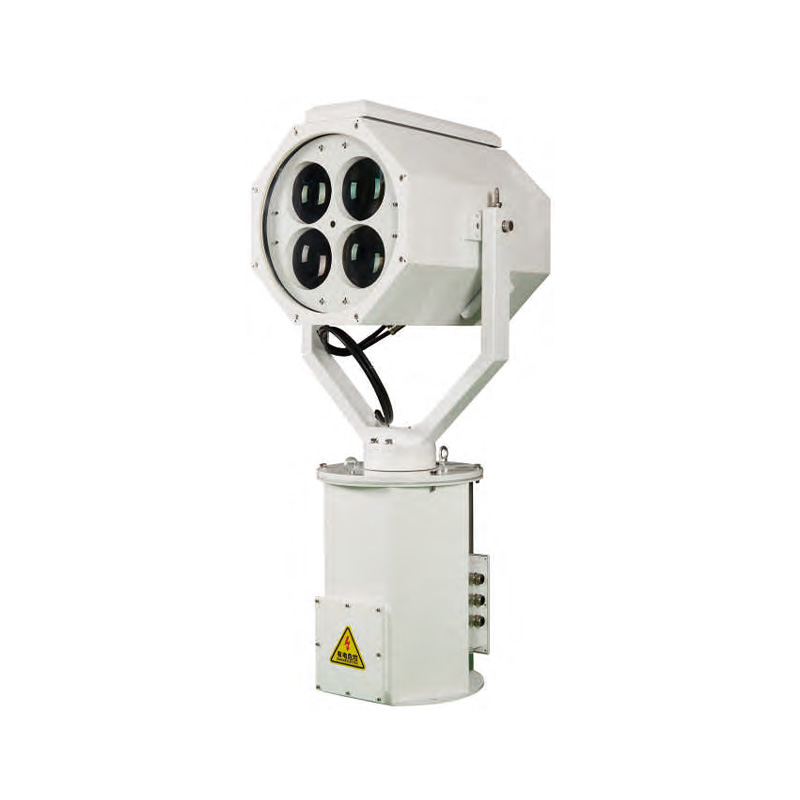
Comparison and Selection of New and Old Technologies
Energy Use Comparison
Marine searchlights that utilise halogen lamps are common with powers of 100–300 W. These lights are very inefficient, primarily converting electrical energy to heat while only producing a fraction of visible light. Moreover, halogen searchlights have a complete power-to-brightness output ratio (efficacy) lower than modern LEDs. LED searchlights offer equal or superior brightness at lower wattages (50-200). In addition, when powered with fuel or generators on ships, the strain placed upon the vessel is reduced tremendously, improving efficacy significantly for long ignition periods.
Comparison of Thermal Management
An operational temperature exceeding 200°C is commonplace in halogen bulbs during regular usage. This can shorten the overall lifespan of a bulb as well as cause ‘burn out’ due to ageing around sealing rings and cables fitted to the lamp body which undergo thermal stress because of overheating. Besides using much more efficient sinks and thermal greases applied to integrated fins which keep temperatures below 60°C, LED lamps greatly extend reliability on thermal stressed machines and help maintain their longevity considerably.
Comparison of Lifespans
Similar to halogen bulbs, LED light sources also require frequent replacements. However, their operational lifespan far exceeds that of traditional bulbs, as LEDs have the capability of lasting between 30,000-50,000 hours. With regards to maintenance constrained parts inventory and trimming spare component stock becomes streamlined.
Beam Quality Comparison
Halogen lamps emit concentrated light beams with warmer color temperature, which can achieve better penetration and target recognition effects, but the edge spots are prone to glare. LED searchlights can achieve uniform, glare-free wide-angle lighting through optical lenses and multi-chip array design, which is more suitable for scenes that require large-scale lighting.
Cost Analysis
In terms of pure purchase cost, halogen lamps are usually only about half of LED lamps with the same illumination, and the initial investment is low. However, from the perspective of the full life cycle cost, LEDs can recover the price difference faster in medium and long-term operations due to their advantages of energy saving and long life, and the overall cost of ownership is lower.
Comparative Analysis of Maintenance and Availability
The accessories for halogen technology have a high range of applicability, alongside bulbs and accessories being easily purchasable in the major ports all over the globe. Thus, it is best suited for fleets with regular docking and optimal conditions for servicing. With a longer maintenance interval, LED technology is more appropriate for remote ships or those that are sensitive to operational downtimes due to its lower failure rate.
As a conclusion, ship owners consider operating conditions, duration of night sailing, capabilities like onboard power system capacity and servicing complications, against pros and cons of each dimension before deciding whether to switch from economical outdated searchlights based on halogen tubes to modern LEDs designed to function throughout the life cycle without need for replacement.
Yushuo Marine Searchlight Product Highlights
Below is a clear side-by-side comparison of traditional halogen searchlights and Yushuo LED marine searchlights:
| Comparison Factor | Traditional Halogen Searchlight | Yushuo LED Marine Searchlight |
| Power Range | 100–300 W | 50–200 W |
| Luminous Efficacy | ~30–40 lm/W | ≥150 lm/W |
| Luminous Flux | 5,000–10,000 lm | 15,000–40,000 lm |
| Operating Temperature | Up to 200 °C | ≤60 °C |
| Lifetime | 2,000–4,000 hours | 30,000–50,000 hours |
| Ingress Protection | Typically IP65 | IP68 |
| Vibration Resistance | Basic bracket mounting, moderate resistance | Tested for shock and vibration, highly reliable |
| Control Interfaces | None | DMX, PWM (digital control options) |
| Maintenance | Requires frequent lamp replacement, longer downtime | Modular lamp modules, each swap takes ≤10 minutes |
| Typical Use Cases | Near-shore work, occasional backup lighting | Long-range navigation, continuous night operations, extreme sea states |
Conclusion
Amid the shifting currents of the marine lighting market, shipowners and operators can implement a gradual upgrade strategy. For example, to gain firsthand experience of LED benefits in the fleet, install LED searchlights on one or two strategically important vessels and monitor energy consumption, brightness, and maintenance costs over time. After that, establish an annual replacement schedule based on data feedback to optimise the investment-recovery balance. This approach enables the attainment of disparate objectives through a controlled-cost model: initial expenses are kept low while initially rising savings from energy use and reduced maintenance begin to flow in later. In partnership with you, Yushuo aims to deliver unparalleled value tailored to specific fleet requirements—striking an ideal equilibrium between operational safety and efficiency.
